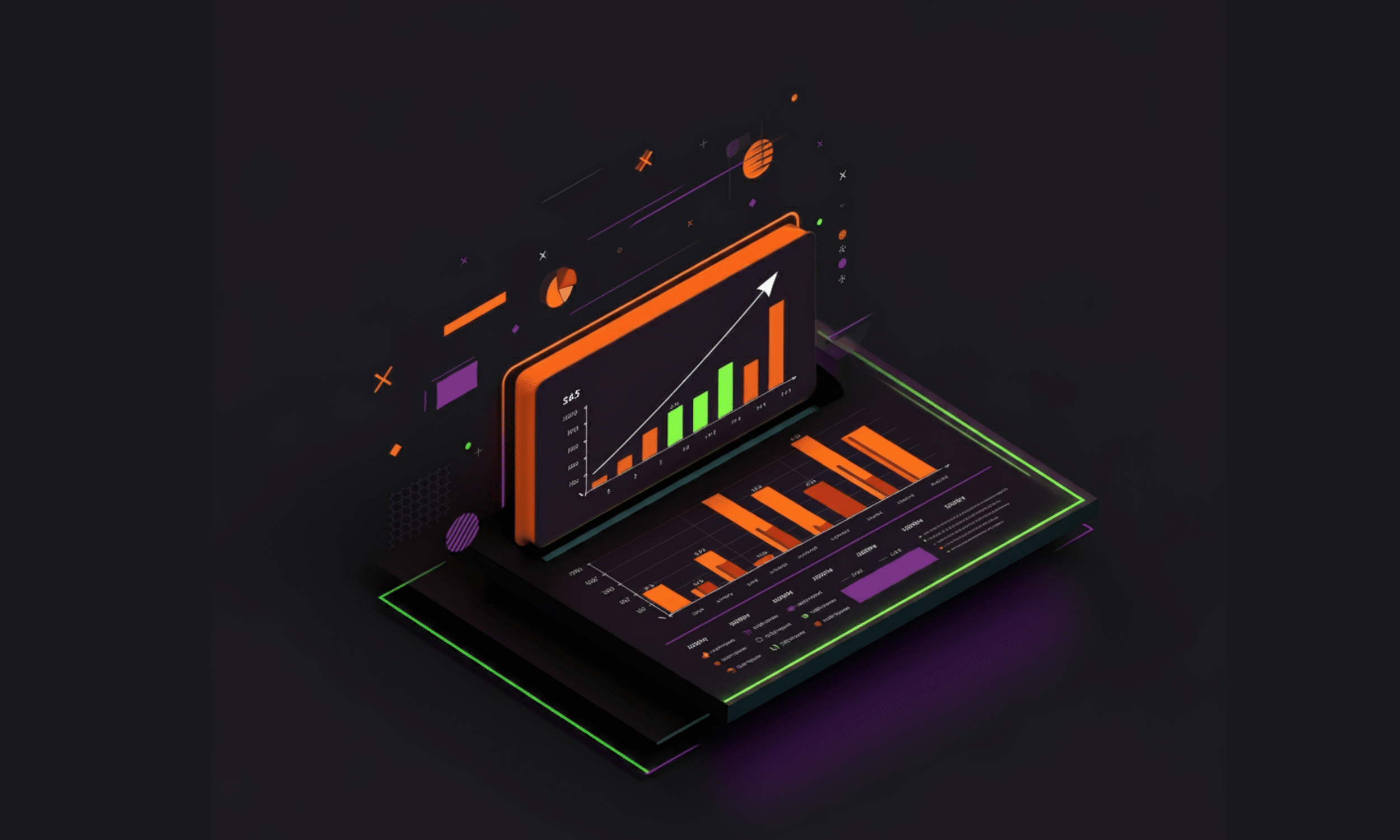Did you know indirect spend can reach up to 40% of a company’s total expenditures? This often-overlooked procurement area holds significant potential for cost reduction and efficiency enhancements. By adopting a strategic spend management approach, businesses can realize savings of up to 25% on indirect expenses.
Optimizing indirect spend not only aids in cost control but also elevates the quality of products and services. It fortifies business operations and ensures sustained success. As your enterprise expands, managing indirect spend becomes pivotal to avert escalating costs. By enhancing spend transparency, refining procurement processes, and engaging stakeholders, you can exploit substantial savings and enhance efficiency across your organization.
Key Takeaways
- Indirect spend can account for up to 40% of a company’s total spend
- Optimizing indirect spend can lead to savings of up to 25%
- Effective spend management improves product and service quality, strengthens operations, and ensures long-term success
- Managing indirect spend is critical for fast-growing companies to control costs
- Gaining spend visibility, streamlining processes, and engaging stakeholders are key to unlocking savings opportunities
Understanding Indirect Spend
To enhance your business efficiency, it’s crucial to understand indirect spend and its distinction from direct spend. Indirect spend, or indirect procurement, covers the acquisition of goods and services that aid your organization’s operations. These items are not directly part of the products or services you sell to customers.
Direct spend is directly linked to your revenue generation, involving the purchase of raw materials or components for production. In contrast, indirect spend supports your business’s smooth operation, playing a vital role despite its indirect impact on your core offerings.
Definition of Indirect Spend
Indirect spend encompasses the procurement of goods and services vital for your business’s upkeep but not directly linked to your final products or services. These expenses are essential for your organization’s effective and efficient operation, even though they don’t directly add to your output.
Examples of Indirect Spend Categories
Indirect spend categories vary by industry and business specifics. Common examples include:
- Office supplies and equipment
- Technology subscriptions and software licenses
- Marketing and advertising expenses
- Utilities and facility maintenance
- Professional services, such as consulting or legal fees
- Human Resources services and employee benefits
- Travel and transportation costs
Indirect spend typically makes up 25-40% of a company’s total expenses. Recognizing the breadth and importance of indirect spend allows you to strategize for better management, enhancing value for your organization.
The Importance of Managing Indirect Spend
Indirect spend, often overlooked, is vital for your business’s future success. It encompasses small, incidental purchases not directly linked to a specific project or product. These expenses can make up a significant 35-60% of your total business costs.
Improving the quality and value of indirect spend can enhance your company’s operations and product quality. It also reduces the risk of overspending and fosters strategic partnerships with suppliers. These areas offer a vast potential for sourcing opportunities and cost savings.
Impact on Business Operations and Profitability
Weak negotiation and inadequate procurement oversight can result in overpaying for supplies, increasing costs and reducing profits. It’s crucial to benchmark purchases against market rates to ensure cost efficiency. However, poorly managed corporate cards can lead to uncontrolled spending and increased risk.
To address these challenges, setting clear spending policies and enforcing approvals is essential. Conducting cross-departmental reviews helps in managing indirect spend effectively, enhancing business processes.
Potential for Cost Savings and Value Generation
Strategic sourcing is key in managing indirect spend by fostering strong vendor relationships and reducing costs. It’s important to regularly review vendor performance to ensure compliance and competitiveness. This approach helps in improving cost outcomes over time.
By focusing on high-cost areas and making strategic adjustments, your business can achieve substantial cost savings and avoid contractual issues. Utilizing spend management software can automate processes, identify risks, and provide insights into spending patterns. These tools and strategies can unlock cost savings and add value to your business.
Challenges in Indirect Spend Management
Indirect spend management poses significant challenges for many organizations. The lack of transparency in this area can lead to six major hurdles that affect business efficiency and profitability. These hurdles include weak adoption of spending policies, insufficient spend visibility, and data accuracy issues. Additionally, incorrect spend classification and a large number of suppliers and stakeholders complicate the process.
Lack of Spend Visibility and Data Accuracy
The primary challenge in indirect spend management is the scarcity of spend visibility. Without a clear understanding of where and how money is spent, identifying savings opportunities and making informed decisions becomes a daunting task. Manual processes in indirect procurement often lead to wasted time and increased costs, alongside inaccurate or incomplete data. A comprehensive procure-to-pay (P2P) solution can help mitigate these issues by providing a centralized platform for managing indirect spend.
Decentralized Purchasing and Scattered Budgets
The decentralized nature of purchasing and scattered budgets across different departments and locations adds another layer of complexity to indirect spend management. This decentralization can result in a lack of stakeholder buy-in and compliance, making it challenging to consolidate and analyze spend data. According to McKinsey, spend analytics tools can reduce product and service costs by 10-25%. This underscores the importance of leveraging technology to gain visibility and control over indirect spend.
Maverick Spending and Contract Leakage
Maverick spending, or rogue spending, occurs when employees make unauthorized purchases. If not addressed, this can result in thousands of dollars in excess costs and diminished profits. The absence of policies and procedures to curb unauthorized spending can hinder growth and lead to contract leakage. Contract leakage occurs when negotiated savings are not realized due to non-compliance. It is essential to implement organizational policies and engage stakeholders to effectively manage indirect spend and ensure everyone is on board with cost-saving initiatives.
Gaining Indirect Spend Visibility
Optimizing indirect spend management begins with understanding your organization’s spending habits. By collecting data from various sources, you can see your indirect spend clearly across different areas. This step is key for finding ways to cut costs and improve efficiency.
Advanced analytics tools, powered by AI and machine learning, can help analyze your indirect spend. These technologies automatically track and categorize your expenses, making the process quicker and more precise. By examining your spend at a detailed level, you can find insights that guide your decisions.
Through spend analytics, you can spot patterns in your indirect spending. This knowledge lets you make choices based on data and improve how you pick suppliers. For instance, combining purchases from several suppliers into one contract can save a lot of money. Also, you might find you can negotiate better deals with suppliers by understanding your spending better.
Sharing the insights from your spend analysis with key people in your company is crucial. Working with procurement, finance, and other teams helps set common goals and priorities. Getting input from different departments gives you a fuller picture of your indirect spend and helps in making better strategies.
Getting a clear view of your indirect spend is an ongoing task that needs constant attention. As your business changes and new issues come up, regularly checking and analyzing your spend data is key. This keeps you ahead in managing costs sustainably.
Developing an Indirect Spend Management Strategy
To effectively manage indirect spend, a comprehensive strategy is crucial. It should include categorization, data analysis, and strategic sourcing. This structured approach helps identify savings, streamline processes, and enhance business efficiency.
Categorizing Indirect Spend
Start by categorizing indirect spend across all locations and departments. Group similar items and identify key suppliers for each category. A spend taxonomy provides clarity on spending patterns, aiding in consolidation and optimization.
Consider the following when categorizing indirect spend:
- Group items by their purpose, such as office supplies, IT services, or travel expenses
- Identify key suppliers and evaluate their performance and pricing
- Assess the spend level in each category and prioritize for potential savings and business impact
Analyzing Spend Data and Identifying Savings Opportunities
After categorizing, analyze spend data to uncover savings opportunities. Review purchase history, examine supplier contracts, and look for consolidation and negotiation potential.
For effective spend data analysis, consider:
- Review purchase history to spot high-cost categories and savings opportunities
- Focus on high-spend areas and those critical to product or service delivery
- Identify chances for supplier consolidation, contract renegotiation, and process enhancements
Creating a Strategic Sourcing Plan
With spend analysis insights, develop a strategic sourcing plan. This plan should align with your business objectives and involve key stakeholders. A well-thought sourcing plan is crucial for achieving your goals.
When crafting your strategic sourcing plan, remember:
- Document spend analysis findings and outline category goals and steps to achieve them
- Engage stakeholders for buy-in and ensure alignment with business needs
- Set a timeline for sourcing initiatives and establish KPIs to measure success
A comprehensive indirect spend management strategy, including categorization, data analysis, and strategic sourcing, can unlock significant savings. With a structured approach and the right tools, you can optimize indirect spend for long-term success.

Engaging Stakeholders in Indirect Spend Management
Effective indirect spend management relies on engaging stakeholders effectively. By building strong relationships with internal teams, procurement can align goals and share knowledge. This collaboration leads to better decision-making. A Deloitte survey revealed that 76% of procurement teams work closely with other departments to understand needs, underscoring the value of collaboration.
To establish trust and comprehend stakeholders’ challenges, initiate discussions by exploring their business objectives. Engage with sales, marketing, and operations to pinpoint procurement’s value-add. By demonstrating procurement’s worth through precise data and timely insights, you enhance stakeholder trust and procurement’s organizational stature.
Building Trust and Sharing Knowledge
Understanding stakeholders’ needs and challenges is vital for trust and collaboration. Share your expertise on spend data and best practices to aid informed decisions. Prepare for discussions by reviewing relevant data and success stories that highlight procurement’s importance. Trust and shared knowledge lay the groundwork for a collaborative indirect spend management approach.
Aligning Goals and Terminology
Clear communication is key to aligning goals and terminology with stakeholders. Collaborate to establish a unified language and define objectives. The Deloitte survey indicated that 62% of procurement teams jointly set savings targets with supported departments, highlighting the significance of alignment. Engaging category stakeholders in policy development ensures their buy-in and adherence. Aligning goals and terminology fosters a unified purpose, propelling successful indirect spend management efforts.
Stakeholder engagement is a continuous process requiring sustained effort and flexibility. Tailor communication to suit different personalities, such as introverts and extroverts, to enhance relationships. Prioritizing collaboration and communication unlocks indirect spend management’s full potential, driving long-term success for your organization.
Optimizing Supplier Relationships
To effectively manage your indirect spend, focus on building strong supplier relationships. Consolidate your supplier base and leverage economies of scale to achieve better contract terms. This approach helps develop solid partnerships that drive value for your organization.
Begin by identifying key suppliers across various sub-categories within your indirect spend. This simplifies your supplier base and enables more favorable contract negotiations. Ensure your spend taxonomy accurately mirrors your business categories. This facilitates spend consolidation and leveraging economies of scale.
Consolidating Suppliers and Leveraging Economies of Scale
Review your vendor relationships to assess their value. Analyze the contracts for potential improvements. Look for restrictions that might be increasing costs or limiting service levels.
After identifying areas for improvement, negotiate with suppliers to find mutually beneficial terms. Adjust payment conditions, prices, or timeframes to foster a strong partnership. Consolidating your suppliers and leveraging your purchasing power often leads to better terms and pricing.
Developing Strong Supplier Partnerships
Building strong partnerships with suppliers is crucial for managing indirect spend effectively. Foster open communication and collaboration to align goals and expectations. Share information and insights to help suppliers better meet your needs and find cost-saving opportunities.
Regularly evaluate supplier performance against agreed metrics and provide feedback for improvement. Encourage innovation and seek ways to optimize processes and reduce costs together. Investing in long-term, mutually beneficial relationships with suppliers unlocks significant value and enhances efficiency in indirect spend.
Implementing Indirect Spend Policies and Procedures
Effective indirect spend management requires clear guidelines and policies. Aligning purchase policies with category stakeholders ensures a consistent, compliant approach. Educating the user community about these policies boosts support for category goals and enhances value delivery.
Teaching stakeholders the value of indirect procurement procedures is crucial. Feedback from stakeholders helps identify areas for improvement and address concerns. Training junior procurement professionals and senior management on supplier performance, contract compliance, and cost-effectiveness is vital. This ensures everyone in procurement is aligned with the same goals.
Robust internal controls and monitoring compliance with your spend policy are key to reducing risk and maximizing savings. Consider these best practices:
- Develop a clear, comprehensive spend policy that outlines approved suppliers, purchasing thresholds, and approval processes
- Communicate the spend policy to all relevant stakeholders and provide training on its application
- Establish a system for tracking and monitoring indirect spend, such as an e-procurement platform or spend analysis tool
- Conduct regular audits to ensure compliance with the spend policy and identify areas for improvement
- Implement consequences for non-compliance, such as additional training or disciplinary action
By adopting these policies and procedures, you can better control indirect spend and drive significant cost savings. Companies using automated procure-to-pay (P2P) solutions have seen savings of 15 to 25 percent in transactions, reducing processing times from days to minutes. Over a year, these automated solutions have cut value leakage by about 3 percent, showing the benefits of a well-managed indirect spend program.
Measuring Performance with Key Performance Indicators (KPIs)
Key performance indicators (KPIs) are vital for optimizing indirect spend management. By setting relevant KPIs and tracking supplier compliance and performance, you align procurement with your organization’s goals. A well-chosen set of KPIs reduces risks, maximizes value for money, and boosts procurement ROI.
Defining Relevant KPIs for Indirect Spend
When crafting KPIs for indirect spend, consider these factors:
- Cost savings: Track the percentage decrease in costs versus previous expenses. A Kearney’s 2020 study found 100% of procurement leaders believe “Price reduction via sourcing and negotiations” significantly impacts cost savings.
- Spend under management: Monitor the percentage of total spend managed by procurement. Large organizations often aim for 80% of spend under management.
- Total Cost of Ownership (TCO): Account for all costs over the life cycle of procured goods or services, beyond just the purchase price.
- Supplier diversity: Track spend with minority-owned, woman-owned, LGBTQIA+-owned, BAME-owned, and SMEs to support diversity programs.
- Sustainability: Include metrics like CO2 emissions reduction, waste reduction, and environmental compliance to meet ESG targets.
Tracking Supplier Compliance and Performance
It’s crucial to monitor supplier compliance and performance for the best terms, pricing, and value from indirect spend. Consider these KPIs:
- Supplier compliance rate: Assess how well suppliers follow organizational purchasing policies and contractual agreements.
- Supplier quality: Use scorecards to check if products or services meet your standards.
- Supplier defect rate: Calculate the percentage of substandard products received from a supplier.
- Supplier availability: Measure the frequency of items available versus orders placed to ensure supply chain continuity.
- Supplier performance: Rate suppliers on price, delivery, quality, and service to identify top performers and areas for improvement.
Regularly monitoring and analyzing these KPIs helps you make data-driven decisions to optimize indirect spend management. It reduces the total cost of ownership and improves procurement ROI. Tailor your KPIs to your organization’s unique needs and goals.
Leveraging Technology for Indirect Spend Management
In today’s digital era, leveraging technology is essential for effective indirect spend management. Automation, e-procurement solutions, and spend management software can help overcome traditional challenges. Research by PayStream shows that 52% of organizations use e-procurement solutions for automation in procurement.
Automated Spend Analysis and Classification

Managing indirect spend is often hindered by a lack of visibility and data accuracy. Automated spend analysis and classification offer a solution. Artificial intelligence (AI) and machine learning algorithms streamline categorizing and analyzing spend data. These technologies help identify savings opportunities, predict future activities, and support data-driven decisions.
E-Procurement and Spend Management Software
For effective indirect spend management, a robust e-procurement and spend management software solution is crucial. These platforms centralize procurement processes, from requisitioning to invoicing. They offer real-time spend visibility, supplier management, and automation, streamlining workflows and ensuring policy compliance.
Choosing the right e-procurement solution is vital. A solution that integrates with your systems can deliver substantial benefits. A recent case study showed an ROI of $17 million in cost savings and efficiency gains, achieved in six weeks at a cost of $50,000.
By 2027, 50% of organizations will use AI to improve procurement, affecting both direct and indirect spend. Embracing technology is now a must for competitiveness and optimizing indirect spend management.
Best Practices for Indirect Spend Optimization
To optimize indirect spend and achieve significant cost savings, it’s crucial to adopt best practices that have proven effective. These strategies can help reduce indirect spend by up to 25 percent. They also strengthen supplier relationships and enhance overall efficiency.
Begin by conducting a detailed spend analysis. This will help identify key suppliers, pinpoint savings opportunities, and minimize risks from non-compliant or underperforming vendors. Such an analysis offers valuable insights into indirect spend categories, which often make up 35 to 60 percent of business expenses.
Next, streamline your indirect spend categories to secure cost savings and strengthen supplier relationships. Consolidating suppliers and negotiating better terms can significantly reduce costs. It also ensures a more reliable supply chain. Indirect spend areas like IT, MRO, logistics, and travel are crucial, often representing a large part of third-party expenses.
Investing in education and training for your team is vital. It ensures buy-in for internal controls and helps combat maverick spend and invoice fraud. Empowering employees to make informed purchasing decisions minimizes unmanaged spend. This can be a significant issue in large enterprises, amounting to billions of dollars in ineffective and inefficient purchases.
Develop and implement a comprehensive spend management plan backed by key performance indicators (KPIs). This plan should outline strategies for centralizing operations, leveraging aggregated negotiating power with suppliers, and ensuring enterprise-wide spend visibility.
Finally, invest in a purpose-built e-procurement solution for immediate cost savings and demonstrable value through process automation. Automated procure-to-pay processes increase payment visibility and provide better control over indirect spend. This makes it simpler to identify and address inefficiencies.
By adopting these best practices and leveraging technologies like source-to-pay software and AI-powered procurement platforms, you can streamline indirect expenditure management. This approach leads to significant cost savings and improves overall business efficiency.
Conclusion
Indirect spend management offers a crucial chance for businesses to boost efficiency and cut costs. It’s about developing a detailed strategy to manage indirect expenses effectively. This strategy helps in finding and using cost-saving chances while aiding long-term success. Key parts of a strong indirect spend management plan include getting a clear view of spending, using strategic sourcing, engaging stakeholders, improving supplier relationships, setting clear procurement rules, tracking performance, and using technology solutions.
By sorting indirect expenses and looking at spend data, companies can spot areas for betterment. They can then craft specific strategies to improve their procurement processes. Getting stakeholders involved and setting common goals and terms helps build trust and encourages teamwork. Combining suppliers and building strong partnerships can bring down costs and better supplier performance. Having clear policies and procedures ensures that indirect spend management is consistent and compliant.
Tracking performance with the right KPIs lets businesses see how they’re doing, find areas to get better, and keep suppliers on track. Using technology, like automated spend analysis tools and e-procurement platforms, can make processes smoother, increase transparency, and enhance indirect spend management efficiency. By following best practices and always improving their methods, companies can make the most of indirect spend. This leads to better business efficiency, stronger operations, higher product and service quality, and big cost savings and value creation.



